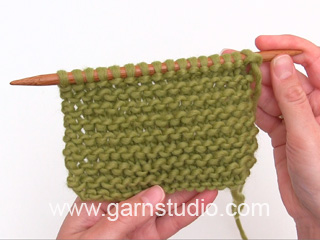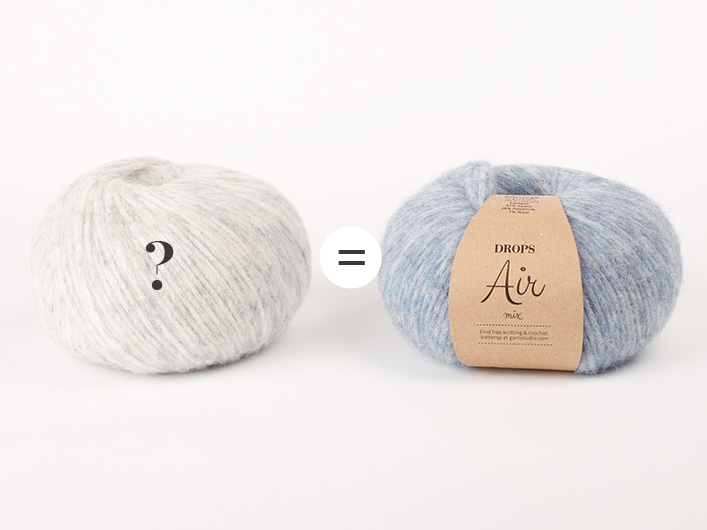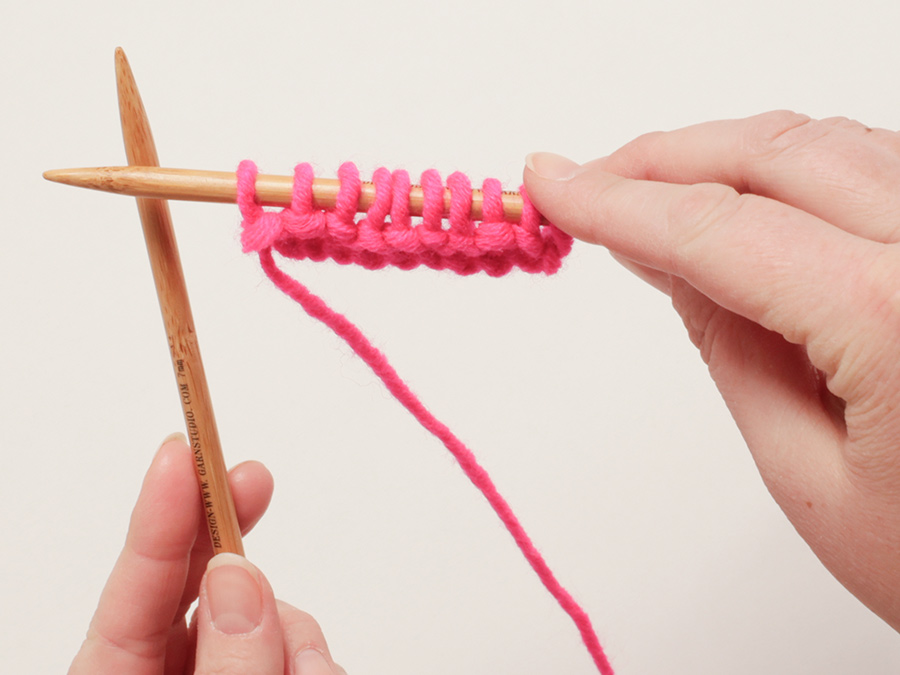Comments / Questions (10)
![]() Sandrine Demortier wrote:
Sandrine Demortier wrote:
Bonjour, j'aimerais réaliser se modèles au tricotin circulaire est-ce possible ? Merci et comment je dois procéder ! J'adore vos modèle ! Bonne journée
04.11.2021 - 15:37DROPS Design answered:
Bonjour Mme Demortier, nous avons uniquement les explications pour le tricot sur aiguilles, n'hésitez pas à demander à votre magasin, même par mail ou téléphone, on devrait pouvoir vous aider. Bon tricot!
04.11.2021 - 15:49
![]() REINE MARIE wrote:
REINE MARIE wrote:
BONJOUR MERCI DE VOTRE MESSAGE LE BONNET EST TERMINE ET TRES BEAU J AI RAJOUTE UN POMPON ET J AI RESSERER COMME VOUS ME DITES ET C EST MIEUX .BONNE JOURNEE MERCI ENCORE DE VOS BEAUX MODELES
04.11.2019 - 13:22
![]() Ruth Schmitter wrote:
Ruth Schmitter wrote:
Leider reicht 50 g Wolle nicht aus! Schade, wenn man nur 50g von dieser Farbe bestellt hat!
28.10.2019 - 11:19DROPS Design answered:
Liebe Frau Schmitter, stimmte Ihre Maschenprobe? Wir haben noch keinen Hinweis über Garnmenge gehabt, hier lesen Sie mehr über Maschenprobe. Viel Spaß beim stricken!
05.11.2019 - 09:40
![]() REINE MARIE wrote:
REINE MARIE wrote:
BONJOUR COMMENT FAIT ON POUR QU IL N Y AI PAS DE DEMARCATION CAR CELA NE FAIT PAS JOLI ET CE MODELE ME PLAIT BEAUCOUP MERCI BEAUCOUP
27.10.2019 - 18:18DROPS Design answered:
Bonjour Reine Marie, vous pouvez resserrer légèrement le fil entre chaque tour, juste assez pour "remonter" la fin du tour envers à la hauteur du début du même tour. Bon tricot!
04.11.2019 - 12:33
![]() Aissela Laudo wrote:
Aissela Laudo wrote:
Quando scegliete il nome per un modello? Sto aspettando che questo (che ho fatto) ne abbia uno!!ciao. Sito eccezionale.
06.09.2019 - 07:04DROPS Design answered:
Buongiorno Aissela, questo modello non ha ancora un nome. A questo link può suggerirne uno. Buon lavoro!
06.09.2019 - 11:04
![]() Nadine wrote:
Nadine wrote:
Bonjour Je veux réaliser ce bonnet mais je n'arrive pas à voir la différence entre le point de jersey et la côte mousse.Quelque chose doit sans doute m'échapper dans l'explication.Merci de votre réponse Toujours un vrai plaisir à réaliser les modèles...je ne cherche même plus à aller sur d'autres sites de tricot.Félicitations!
11.11.2015 - 13:26DROPS Design answered:
Bonjour Nadine, quand on tricote du jersey en rond, on tricote tous les tours à l'endroit, pour le point mousse, on tricote alternativement 1 tour end/1 tour env, ainsi: 5 tours jersey, 4 côtes mousse vont se tricoter ainsi: 5 tours end, *1 tour end, 1 tour env*, répétez 4 fois de *-*. Bon tricot!
11.11.2015 - 14:17
![]() Eli wrote:
Eli wrote:
Strikker str 6-9 år, 84 masker. Man skal felle 5 ganger og ende opp med 12 masker, men jeg får det til å bli 24 masker etter å ha felt 5 omganger. Skal det felles 6 omganger eller skal jeg strikke 2 og 2 med 24 etter 5 omganger med felling?
10.07.2015 - 16:00DROPS Design answered:
Hej, Du feller på hver side af merketrådene (6x2) ialt 6 gange = 72m felt og da har du 12 m tilbage. God fornøjelse!
30.07.2015 - 15:42
![]() Louise Bajohr wrote:
Louise Bajohr wrote:
Dans le modele DROPS Extra 0-906. Concernant les diminutions, je ne sais pas ou placer les marqueurs. Pour la taille 6-9 ans, on dit de placer 6 marqueurs espaces de 14 mailles les uns des autres. Je tricote avec 5 broches double pointes et il y a un marqueur qui se trouve a la fin du rang. Cela ne fonctionne pas du tout. Est-ce que je dois placer les marqueurs apres la 14e maille? Merci
20.01.2015 - 16:37DROPS Design answered:
Bonjour Mme Bajohr, on place effectivement un marqueur après chaque 14e m : 14 m x 6 marqueurs = 84 m. Le marqueur du début des tours est compris dans ces 6 marqueurs. Bon tricot!
21.01.2015 - 11:02
![]() Clawur wrote:
Clawur wrote:
Hübsch und geht schnell! Noch ein tolles Weihnachtsgeschenk!
16.12.2014 - 21:28Audrey wrote:
The Ridge=k1 round and P1 round. Does this mean you start off as knit 1, P1, K1 all the away around, like a rib stitch? Or should it all be in Garter stitch for the Ridge. The way I read it though, K1 round then P1 round, sounds like stocking stitch and stocking stitch appears in the pattern later on and you would not get the ridge affect if it all is in Stocking stitch. Audrey
04.07.2013 - 00:30DROPS Design answered:
Dear Audrey, pattern is *5 rounds st st, ie knit 5 rounds, then 4 ridges, ie (K1,P1) 4 times. Happy knitting!
17.07.2013 - 14:57
DROPS Extra 0-906 |
|
 |
 |
Knitted DROPS children hat in ”DROPS LOVES YOU III” or ”Karisma”.
DROPS Extra 0-906 |
|
|
GARTER ST (in the round): 1 ridge = K 1 round, P 1 round DEC TIPS: Dec before marker: work until 2 sts remain before marker, slip next st as if to K, K 1, psso. Dec after marker: K 2 tog. ---------------------------------------------------------- HAT: Work in the round on circular needle, change to double pointed needles when needed. Cast on 78-84-90 sts, work 4 ridges – read above, * work 5 rounds stocking st, work 4 ridges *, repeat *-* until finished. When piece measure approx 14-16-18 cm place 6 markers on round with 13-14-15 sts between each. On next round dec 1 st each side of each marker – READ DEC.TIPS! Repeat dec on every other round 4-5-5 more times = 18-12-18 sts. K 2 tog around. Cut yarn and pull through rem sts,tighten together and fasten off. |
|
|
Have you made this or any other of our designs? Tag your pictures in social media with #dropsdesign so we can see them! Do you need help with this pattern?You'll find 12 tutorial videos, a Comments/Questions area and more by visiting the pattern on garnstudio.com. © 1982-2024 DROPS Design A/S. We reserve all rights. This document, including all its sub-sections, has copyrights. Read more about what you can do with our patterns at the bottom of each pattern on our site. Have you finished this pattern? |
|











































Post a comment to pattern DROPS Extra 0-906
We would love to hear what you have to say about this pattern!
If you want to leave a question, please make sure you select the correct category in the form below, to speed up the answering process. Required fields are marked *.